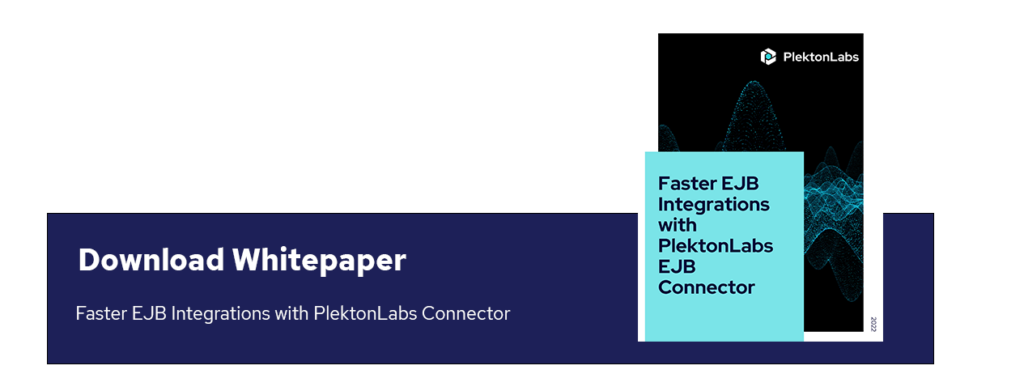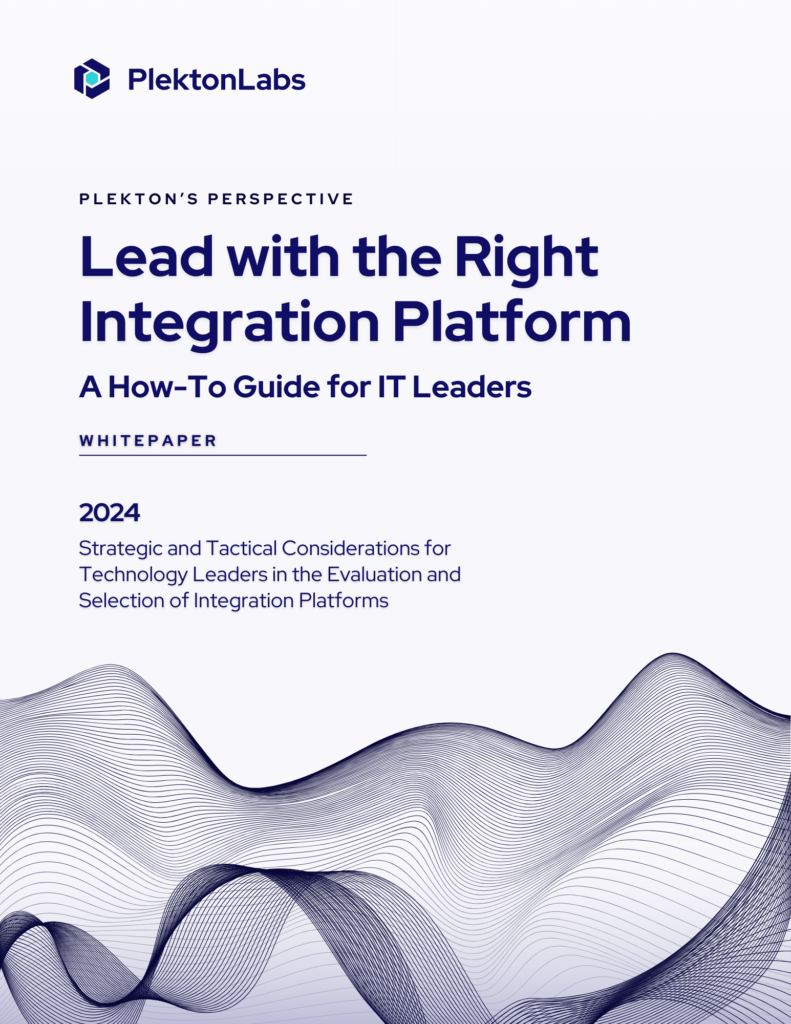Is your MuleSoft integration system secure, scalable, and running at peak performance? An outdated runtime can lead to higher costs, security risks, and inefficiencies. In this blog, we’ll cover when to migrate, key business benefits, CTO challenges, and critical KPIs. Plus, see how PlektonLabs optimized a major North American airport’s integration framework with zero downtime and future-ready scalability.
Is Your Integration System Running as Expected?
A robust integration system is the backbone of enterprise operations. However, outdated systems can lead to inefficiencies, security vulnerabilities, and performance bottlenecks.
Take the example of a renowned international airport in North America that relied on an outdated runtime version of MuleSoft to manage critical functions like gate management and baggage handling. The older system was nearing the end of its support period, increasing the risk of system failures and unsupported outages, which are major threats to operational continuity.
The airport operations team was concerned about the tight timeline, lack of documentation, and knowledge transfer issues due to key developers leaving and limited team availability. Despite this, the urgency to meet the deadline required meticulous migration management.
This is a reality for many enterprises today. If your integration platform is aging, it may be time to consider a strategic upgrade.
The Problems a CTO Encounters When Considering a Migration
- Integration Complexity – Ensuring a smooth transition without disrupting critical business operations.
- Downtime & Business Continuity – Minimizing service interruptions while switching runtimes.
- Skill Gaps – Upskilling internal teams to manage new runtime environments efficiently.
- Budget Constraints – Justifying the investment against other IT priorities.
- Legacy Dependencies – Managing compatibility issues with older APIs, connectors, or custom code.
🔔 A major North American airport encountered challenges during a system migration, including downtime and reduced support. To optimize the integration framework and ensure operational reliability, we prioritized system performance and minimal downtime.
🔊 We developed role-specific training and documentation to facilitate efficient adoption of the new platform. By prioritizing business-critical components, scaling our team, and bringing in experts, we ensured a secure and timely migration.
🥇High adoption was achieved due to the unchanged UI and core apps, with upgrades in the microservices layer. A solid transition plan with contingencies ensured reliability and minimized disruption.
Risks of not Migrating
- Increased security Risks – Outdated runtimes are vulnerable to cyber threats and compliance violations.
- Performance Bottlenecks – Older runtimes may struggle with real-time data processing and API scalability.
- Higher Maintenance Costs – Increased effort to troubleshoot and patch issues on unsupported versions.
- Incompatibility with Modern Platforms – Limits ability to integrate with AI-driven analytics, cloud-based services, and advanced automation tools.
The impending end-of-life for product support presented a significant risk to our client’s project. Failure to upgrade within the tight deadline would leave the airport operating without production support. For an airport, running critical systems without vendor support could result in severe operational disruptions and potential safety hazards. CTOs must carefully consider these factors, as timely migration ensures operational resilience, while delays could lead to costly setbacks.
The Dichotomy of Migration and Temporal Delay
When to Migrate:
✅ End of Support is Near – If the current MuleSoft runtime version is nearing End of Life (EOL), migration is essential to maintain security and compliance.
✅ Performance & Scalability Issues – If existing workloads can’t keep up with business demand, have slow processing time, and undesired error rates, it’s time to upgrade.
✅ Cloud Modernization Strategy – Migrating to a hybrid or cloud-native architecture necessitates a runtime shift.
✅ Frequent Maintenance & Downtime – If troubleshooting takes up too many resources, a newer runtime can streamline operations.
✅ Regulatory Compliance – Industries like finance, healthcare, and telecom require up-to-date security measures.
When to Wait:
❌ Ongoing Major Projects – If migrating will disrupt critical business initiatives, it may be wise to delay.
❌ Lack of Internal Expertise – If teams are unprepared, rushing migration could cause implementation failures.
❌ Unclear Business Value – If the existing runtime meets current business needs without risk exposure, waiting for a stronger business case may be the best approach.
Key Questions to Ask Before Migrating:
- What are the security risks of staying on the current version?
- Will the new runtime improve integration performance and reduce operational costs?
- What is the expected downtime, and how can we minimize business impact?
- Do we have the right internal expertise or need external support?
- What will be the total cost of migration (TCO), and what ROI can we expect?
PlektonLabs’ expert delivery team helps decision-makers align their migration with business goals, IT roadmaps, and long-term digital strategy. Learn more about our Mule 3 > Mule 4 Migration service.
Why Is MuleSoft Runtime Migration Important?
A runtime migration should deliver tangible business value. In our Canadian airport Success Story, the migration led to:
- Enhanced Security: The new system offers a more secure environment, reducing vulnerabilities.
- Modernization and Scalability: The updated architecture is both modern and scalable, ready to accommodate future growth.
- Increased Reliability: System reliability has improved, leading to fewer disruptions.
- Improved Design: The system is now better designed, making it easier to maintain and manage.
- Advanced Monitoring: Enhanced monitoring and observability provide better insights into system performance.
- Comprehensive Documentation: Detailed documentation has been created to support future enhancements and maintenance.
The new system has transformed airport operations in real-time by increasing staff confidence, ensuring robust support, and maintaining business continuity. The enhanced monitoring tools provide insights that have opened up new opportunities for optimization and scaling, which have strengthened the airport’s overall operational resilience. These benefits are applicable across all industries where system reliability and data integrity are critical.
Key Performance Indicators That IT Leaders Can Improve With a Runtime Upgrade
A successful migration should deliver measurable business improvements. Here are key KPIs to track:
✅ System Uptime & Reliability – Measure the reduction in downtime post-migration.
✅ API Response Time & Performance – Track API speed and efficiency improvements.
✅ Security Compliance Metrics – Ensure adherence to ISO, GDPR, HIPAA, or industry-specific standards.
✅ Operational Cost Savings – Calculate reduced infrastructure and maintenance costs.
✅ Integration Success Rate – Monitor API call failures, data sync errors, and processing times.
✅ Time-to-Market for New Features – Measure how quickly IT can deploy new integrations post-migration.
✅ Customer Experience Scores (CX & CSAT) – Faster, more reliable integrations enhance customer engagement.
✅ Adoption & Team Productivity – Evaluate how easily teams adapt to the new runtime and the impact on development cycles.
Aligning these KPIs with business objectives ensures that migration isn’t just an IT success—it’s a strategic win for the entire enterprise.
PlektonLabs Achieves Outcomes
We specialize in seamless MuleSoft Runtime Migrations. Our consultants identify, evaluate, and categorize your interfaces and applications to clearly define the migration approach. With the right level of effort and skill, we make your migration project a breeze.
PlektonLabs’ Migration Approach
We modernized the major North American airports’ MuleSoft Infrastructure with
- In-depth analysis – Our experts inventory upgradeable components, interview key stakeholders to assess complexities, and interdependencies, and prioritize tasks to create a clear migration roadmap.
- Optimized Integration Design – We architect scalable designs through a modular approach and service decomposition. Ensuring management, independent scaling, and flexibility is one of our top priorities.
- Zero-Disruption Migration – We ensure zero downtime through advanced architectural solutions, high-availability load balancers, and gradual workload transition. We also ensure a contingency plan with disaster recovery and rollback protocols is set up for a smooth migration.
Key Results for Organizations:
✅ Improved Customer Experience
✅ Increased Revenue
✅ Faster Development Cycles
By leveraging MuleSoft’s latest capabilities, we enabled a high-performance, secure, and scalable. Get the Success Story here: Optimizing Integration Platform
Final Thoughts
Our team of experts agree that successfully managing complex migrations requires a combination of careful planning, clear communication, and effective coordination.Organizations can mitigate risks and streamline the process by leveraging prior experience.
Additionally, assembling a skilled team with expertise in the relevant technology stack is key to saving time and achieving a smooth, efficient migration. Flexibility and adaptability are also essential to ensure that unexpected challenges don’t derail progress. By keeping these principles in mind, organizations can confidently and successfully navigate even the most intricate migration projects.
Why PlektonLabs?
- Future-Ready Solutions — We design scalable integrations that grow alongside your business.
- Proven Expertise — Our track record includes successful migrations across a wide range of industries and complex projects.
- Minimal Downtime — We ensure seamless transitions with zero disruptions to your operations.
📢 Enhance your MuleSoft ecosystem today with us!





